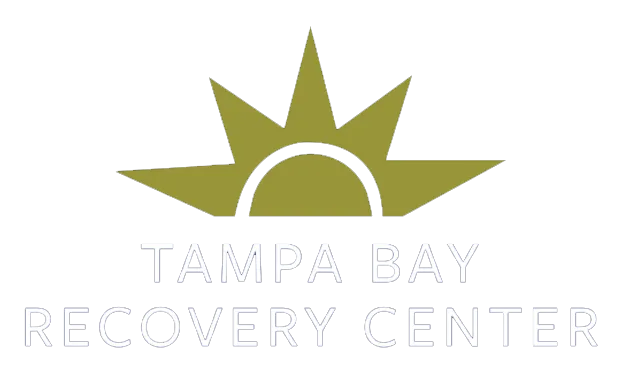Post-acute withdrawal syndrome (PAWS) is a set of persistent withdrawal symptoms that can continue long after the drug and / or alcohol detox period has ended.
While many people expect withdrawal symptoms to resolve within days or weeks, PAWS can persist for months or even years. Understanding post-acute withdrawal syndrome is crucial for anyone navigating the recovery journey, as well as their loved ones and treatment providers.
If you or a loved one are looking for help, our detox programs in Tampa can help. Call us at 813-733-8774 or verify your insurance.
What is PAWS?
Post-Acute Withdrawal Syndrome, commonly referred to as PAWS, describes a cluster of symptoms that can persist long after the acute withdrawal phase has ended. The term was first introduced in the medical literature in the 1980s by researchers studying prolonged withdrawal symptoms in individuals recovering from alcohol and substance use disorders.
Unlike acute withdrawal, which typically involves intense physical symptoms that resolve within days to weeks, PAWS primarily manifests as psychological and emotional symptoms that can fluctuate unpredictably over extended periods. These symptoms often come and go in waves, making the recovery process feel like an emotional rollercoaster.
Common PAWS Symptoms by Substance Type
Different substances can produce varying PAWS symptoms:
Alcohol:
- Anxiety and panic attacks
- Depression and mood swings
- Difficulty concentrating
- Sleep disturbances
- Memory problems
- Irritability and emotional instability
Opioids (heroin, prescription painkillers):
- Persistent fatigue and low energy
- Depression and anxiety
- Sleep disorders
- Difficulty experiencing pleasure (anhedonia)
- Cognitive fog
- Strong cravings
Stimulants (cocaine, methamphetamine):
- Severe depression
- Extreme fatigue
- Intense cravings
- Anxiety and agitation
- Sleep pattern disruption
- Cognitive impairment
Benzodiazepines:
- Anxiety and panic disorders
- Sensory sensitivities (light, sound, touch)
- Cognitive difficulties
- Sleep disturbances
- Depression
- Muscle tension and tremors
What is Protracted Withdrawal?
Protracted withdrawal is another term used to describe the same phenomenon as PAWS. It refers to the persistence of withdrawal symptoms beyond the typical acute withdrawal timeline. While acute withdrawal from most substances resolves within 1-2 weeks, protracted withdrawal can last anywhere from several months to over a year, depending on various factors including the substance used, duration of use, and individual physiology.
The term “protracted” emphasizes the extended nature of these symptoms, distinguishing them from the shorter-term acute withdrawal phase. Both PAWS and protracted withdrawal describe the same clinical phenomenon – the brain’s continued adjustment as it heals from the effects of chronic substance use.
What Causes Protracted Withdrawal?
Protracted withdrawal occurs due to the brain’s slow process of returning to normal functioning after prolonged substance use. When someone uses drugs or alcohol regularly, their brain chemistry adapts to function with these substances present. This process, called neuroadaptation, involves changes in neurotransmitter systems, receptor sensitivity, and neural pathways.
Key factors contributing to protracted withdrawal include:
Neurochemical Imbalance: Chronic substance use disrupts the brain’s natural balance of neurotransmitters like dopamine, serotonin, and GABA. Restoring this balance can take months or years.
Brain Structure Changes: Long-term substance use can alter brain structure and function, particularly in areas responsible for mood regulation, decision-making, and stress response.
Receptor Sensitivity: The brain’s receptors may remain altered long after substance use stops, affecting how the brain responds to natural chemicals and environmental stimuli.
Stress Response System: Chronic substance use can dysregulate the hypothalamic-pituitary-adrenal (HPA) axis, leading to prolonged stress sensitivity and emotional instability.
How is PAWS Diagnosed?
PAWS is typically diagnosed through clinical assessment rather than specific medical tests. Healthcare providers and addiction specialists evaluate:
- Symptom Timeline: Symptoms must persist beyond the typical acute withdrawal period and cannot be better explained by other mental health conditions.
- Substance Use History: The diagnosis requires a history of chronic substance use and recent cessation or significant reduction.
- Symptom Pattern: PAWS symptoms often fluctuate in intensity and may come in waves, which helps distinguish them from other conditions.
- Exclusion of Other Conditions: Healthcare providers must rule out other mental health disorders, medical conditions, or medication effects that could explain the symptoms.
- Functional Impact: The symptoms must significantly impact daily functioning, relationships, or quality of life.
It’s important to note that PAWS can co-occur with other mental health conditions, making accurate diagnosis and treatment planning crucial.
More: How Long Does PAWS Last?
How Does PAWS Affect Someone in Recovery?
PAWS can significantly impact various aspects of a person’s recovery journey and daily life:
- Emotional Challenges: Unpredictable mood swings, depression, and anxiety can make it difficult to maintain emotional stability and cope with daily stressors.
- Cognitive Difficulties: Problems with concentration, memory, and decision-making can affect work performance, relationships, and overall quality of life.
- Sleep Disruption: Persistent sleep problems can exacerbate other symptoms and impact physical and mental health.
- Relationship Strain: Mood instability and irritability can strain relationships with family, friends, and romantic partners.
- Relapse Risk: The discomfort and unpredictability of PAWS symptoms can increase the risk of relapse, as individuals may consider using substances again to find relief.
- Self-Esteem Issues: Ongoing struggles with PAWS can lead to feelings of discouragement and questions about one’s ability to maintain recovery.
- Social Isolation: Some individuals may withdraw from social activities due to symptoms like anxiety or cognitive difficulties.
How is Protracted Withdrawal Treated?
Treatment for PAWS typically involves a comprehensive, multifaceted approach:
Medical Management:
- Antidepressants for persistent depression and anxiety
- Sleep medications for ongoing sleep disorders
- Nutritional supplements to support brain healing
- Regular medical monitoring and adjustment of treatments
Psychotherapy:
- Cognitive Behavioral Therapy (CBT) to develop coping strategies
- Mindfulness-based therapies to manage stress and emotional regulation
- Trauma-informed therapy if underlying trauma is present
- Group therapy for peer support and shared experiences
Holistic Approaches:
- Regular exercise to boost mood and energy levels
- Meditation and relaxation techniques
- Acupuncture and massage therapy
- Art or music therapy for emotional expression
Lifestyle Modifications:
- Structured daily routines
- Healthy sleep hygiene practices
- Balanced nutrition and hydration
- Stress management techniques
Support Systems:
- Continued participation in support groups
- Family therapy and education
- Peer recovery support services
- Sober living environments when appropriate
Tips to Manage PAWS
Successfully managing PAWS requires patience, persistence, and the right strategies:
1. Educate Yourself: Understanding PAWS helps normalize the experience and reduces anxiety about symptoms. Knowledge empowers you to better manage the challenges.
2. Maintain Structure: Establish consistent daily routines including regular sleep, meal times, and activities. Structure provides stability during unpredictable symptom fluctuations.
3. Practice Self-Care: Prioritize activities that promote physical and mental well-being, such as regular exercise, healthy eating, and relaxation techniques.
4. Build a Support Network: Stay connected with supportive friends, family members, and recovery peers. Don’t isolate yourself during difficult periods.
5. Monitor Your Symptoms: Keep a journal to track symptom patterns, triggers, and effective coping strategies. This information can be valuable for treatment planning.
6. Manage Stress: Develop healthy stress management techniques like deep breathing, meditation, or yoga. High stress levels can worsen PAWS symptoms.
7. Be Patient: Remember that recovery is a process and PAWS symptoms will gradually improve with time. Celebrate small victories and progress.
8. Stay in Treatment: Continue working with healthcare providers and therapists even when symptoms improve. Consistent support is key to long-term success.
9. Avoid Triggers: Identify and avoid situations, people, or environments that trigger cravings or worsen symptoms.
10. Focus on Nutrition: Eat a balanced diet rich in nutrients that support brain health, including omega-3 fatty acids, B vitamins, and antioxidants.
Take the Next Step in Your Recovery Journey
If you or a loved one is experiencing symptoms of Post-Acute Withdrawal Syndrome, you don’t have to face this challenge alone. At Tampa Bay Recovery Center, our experienced team understands the complexities of PAWS and provides comprehensive, compassionate care tailored to your unique needs.
Our evidence-based rehab programs combine medical management, psychotherapy, holistic approaches, and ongoing support to help you successfully navigate PAWS and maintain long-term recovery. We believe that with the right treatment and support, you can overcome the challenges of protracted withdrawal and build a fulfilling life in recovery.
Don’t let PAWS derail your recovery progress. Contact Tampa Bay Recovery Center today to learn more about our specialized PAWS treatment programs and take the next step toward lasting wellness. Our admissions team is available 24/7 to answer your questions and help you or your loved one get the support you deserve.







